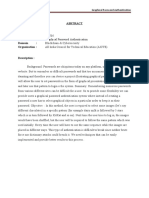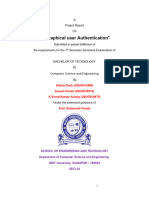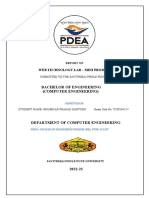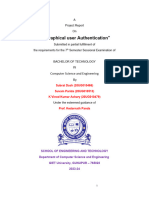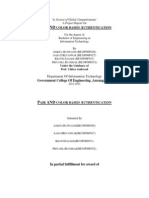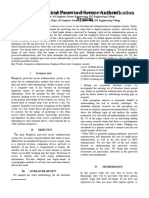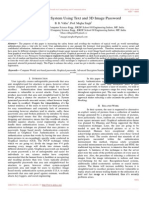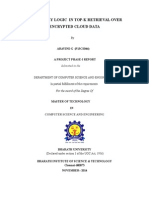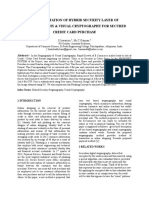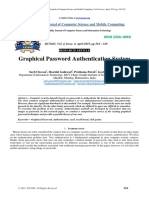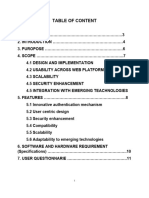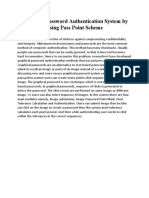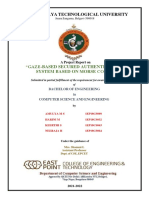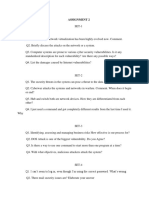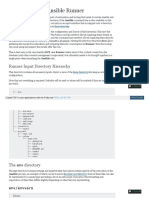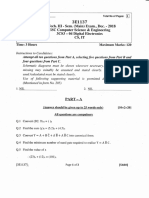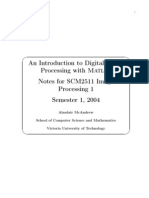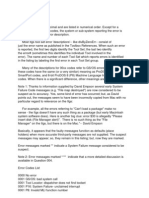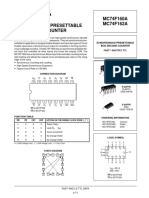0% found this document useful (0 votes)
107 views10 pagesGraphical Password Authentication For Banking System
This document presents a project that proposes using a graphical password authentication technique for banking systems as an alternative to alphanumeric passwords. The objectives are to provide a more secure authentication method, improve system functionality through electronic filing, and automatically notify users of any issues. The proposed method uses a neuro-fuzzy technique to randomly generate color palettes for graphical passwords at each login to prevent shoulder surfing. The project details the challenges, architecture, algorithms, and hardware and software specifications of the system. References are provided on related graphical password and cloud computing authentication research.
Uploaded by
Harish hariCopyright
© © All Rights Reserved
We take content rights seriously. If you suspect this is your content, claim it here.
Available Formats
Download as PPTX, PDF, TXT or read online on Scribd
0% found this document useful (0 votes)
107 views10 pagesGraphical Password Authentication For Banking System
This document presents a project that proposes using a graphical password authentication technique for banking systems as an alternative to alphanumeric passwords. The objectives are to provide a more secure authentication method, improve system functionality through electronic filing, and automatically notify users of any issues. The proposed method uses a neuro-fuzzy technique to randomly generate color palettes for graphical passwords at each login to prevent shoulder surfing. The project details the challenges, architecture, algorithms, and hardware and software specifications of the system. References are provided on related graphical password and cloud computing authentication research.
Uploaded by
Harish hariCopyright
© © All Rights Reserved
We take content rights seriously. If you suspect this is your content, claim it here.
Available Formats
Download as PPTX, PDF, TXT or read online on Scribd
/ 10


